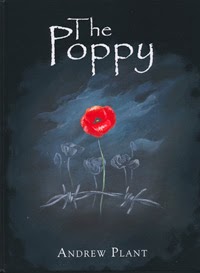And here they are, folks, this year's Children's Book Council of Australia shortlisted books. I haven't done more than glance at the Notables, although they have the irritating habit - for me, anyway - of listing the shortlisted books among the Notables, which makes the list way too long and you have to disentangle them from the books which nearly made it to the shortlist, but not quite. (I scored two of those, one for Potions To Pulsars, one for Wolfborn, and Potions was also on the Clayton's shortlist).
My library only has three of the shortlisted books, so those are the ones I've read, though the Fiona Wood novel has been waiting patiently on my iBooks shelf for some time, I guess I'd better read it now. Lucky lady, she has written two novels and both have been on the shortlist! We have Life In Outer Space, The First Third and in the Younger Readers category, My Life As An Alphabet. All delightful books, though in the Older Readers category, I'm going to hope it goes to The First Third, a lovely, lovely book, gentle, touching, funny and sad all at once.
If you haven't heard of the Clayton's shortlist, here's a link to this year's predictions:
http://readalert.blogs.slv.vic.gov.au/2014/03/13/cbca-2014-book-of-the-year-prediction-events/#.U0ToUcsaySM
If you're an old enough Aussie or Kiwi, you'll remember the ad for a drink called "Clayton's - the drink you have when you're not having a drink!" It was an imitation alcohol. I don't think you can buy it these days. But it added an expression to the language. You speak of a Clayton's this or that when you mean something that's a bit like whatever, but not quite. The Clayton's Shortlist is a prediction of what is going to be on the CBCA shortlist.
Interestingly, it got about three books right(The First Third was an Honourable Mention in the Clayton's and made it to the CBCA Shortlist). Check it out, see what you think.
I will have to buy at least the Older and Younger Readers for my library. Fortunately, I now have a new bookseller, the Sun bookshop in Yarraville. Only problem is, the minute something gets on the shortlist, you can't get it. One bookseller told me that some publishers actually withdraw their books so they can add the shortlist "sticker" to the cover. Often, you can't get the books at all until AFTER the winners are announced? Yeesh! Must contact the Sun now, before I get back to work.
Meanwhile, if you've read any of the books on this list, do give your opinion. I'll scurry around and put my own comments up as I read them.
Older Readers
The Incredible Here and Now (Felicity Castagna, Giramondo)
Life in Outer Space (Melissa Keil, HGE)
The First Third (Will Kostakis, Penguin)
Fairytales for Wilde Girls (Allyse Near, Random House)
Wildlife (Fiona Wood, Pan)
The Sky so Heavy (Claire Zorn, UQP)
Younger Readers
Violet Mackerel’s Possible Friend (Anna Branford, illus by Sarah Davis, Walker Books)
Song for a Scarlet Runner (Julie Hunt, A&U)
A Very Unusual Pursuit (Catherine Jinks, A&U)
My Life as an Alphabet (Barry Jonsberg, A&U)
Light Horse Boy (Dianne Wolfer, illus by Brian Simmonds, Fremantle Press)
Early Childhood
I’m a Dirty Dinosaur (Janeen Brian, illus by Ann James, Viking)
Baby Bedtime (Mem Fox, illus by Emma Quay, Viking)
Banjo and Ruby Red (Libby Gleeson, illus by Freya Blackwood, Little Hare)
Kissed by the Moon (Alison Lester, Viking)
The Swap (Jan Ormerod, illus by Andrew Joyner, Little Hare)
Granny Grommet and Me (Dianne Wolfer, illus by Karen Blair, Walker Books)
Picture Books
The Treasure Box (Margaret Wild, illus by Freya Blackwood, Viking)
King Pig (Nick Bland, Scholastic Press)
Silver Buttons (Bob Graham, Walker Books)
Parachute (Danny Parker, illus by Matt Ottley, Little Hare)
The Windy Farm (Doug MacLeod, illus by Craig Smith, Working Title Press)
Rules of Summer (Shaun Tan, Lothian)
Eve Pownall Award for Information Books
Jeremy (Christopher Faille, illus by Danny Snell, Working Title Press)
Ice, Wind, Rock (Peter Gouldthorpe, Lothian)
Jandamarra (Mark Greenwood, illus by Terry Denton, A&U)
Yoko’s Diary: The Life of a Young Girl in Hiroshima (ed by Paul Ham, ABC Books)
Meet… Captain Cook (Rae Murdie, illus by Chris Nixon, Random House)
Welcome to My Country (Laklak Burarrwanga and family, A&U)
Crichton Award for New Illustrators:
Big Red Kangaroo (Graham Byrne, text by Claire Saxby, Walker Books)
The Bloodhound Boys Book 1: The Great Blood Bank Robbery (Andrew Cranna, Walker Books)
I’ve An Uncle Ivan (Ben Sanders, Thames & Hudson)
The Nerdy Birdy (David Snowdon, text by Danielle Wheeldon, self-published).












